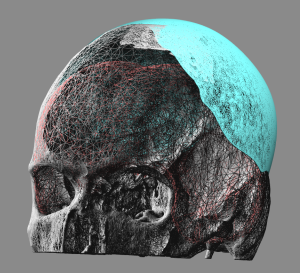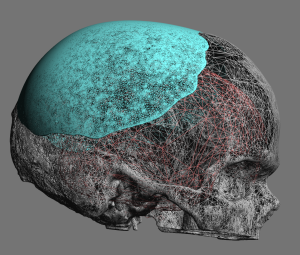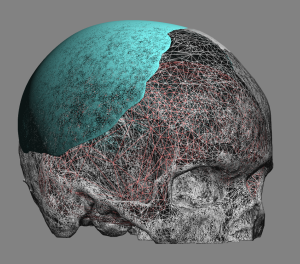There are a variety of basic head shape abnormalities in adults of which the narrow head shape is one of them. The narrow head shape is most commonly perceived by having diminished width from one temporal area to the other in the front view. (bitemporal width) This can often involve the forehead and/or back of the head (biparietal narrowing) for an overall pinched look to the head. Only in the more severe forms is the head longer from front to back which indicates some variant of congenital sagittal craniosynostosis. In some patients it may be a variant of this well known congenital skull deformity or may be an untreated case of actual synostosis.
As an adult the narrow head shape can only be treated by onlay augmentation to help build out deficient width areas. This can not be done by bone cements as the sides of the head are composed of an overlying soft tissue layer (muscle) and not solid bone like the front, top and back of the head. Stripping the muscle attachments on the sides of the head to expose the bone underneath it to place any implant material is a misguided approach that is fraught with postoperative muscle contraction contour problems that can be very difficult to correct secondarily. An effective onlay augmentation in widening the narrow head must sit on top of the soft tissue.(deep temporal fascia) Only a custom solid silicone skull implant design can achieve that effectively with feather edging and without risk of muscle contour issues.



Dr. Barry Eppley
Indianapolis, Indiana





